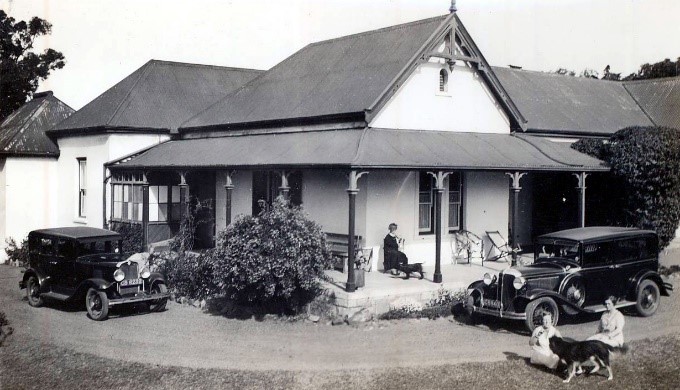This is the story of William Playdon (1872-1945) and his son William Stanley Playdon (1899-1985) who were boot and shoe manufacturers in Port Elizabeth until 1945.
Main picture: W. Playdon and Co. Later name changed to Playdon and Co. (Pty) Ltd, Uitenhage Road PE, now a highway
William Playdon, born 1872, St James Street Worcester. Died 1945 Port Elizabeth, South Africa. At age 14 William was apprenticed to a boot and shoemaker as a “clicker” for five years, that is, he learned to cut the uppers with a knife. The term comes from the sound of the operator’s hand-knife blade rattling against the brass edge-binding (including the joints in the binding) used to protect the board patterns which were overlaid onto the skin. (Apprenticeship contract dated 12 November 1885). William had no formal education after the age of 13, completing his apprenticeship at the age of 18.

His life between 1890 and 1897 was fully occupied in employment that gave him wide experience in shoe making (see the obituary below). He had started his own business but soon closed it in order to emigrate. In 1897 he sailed for South Africa with his wife Elizabeth Ann nee Sullivan and two small children. They were both 26 years old. He built his first factory at the age of 29 on the corner of Uitenhage Road and Adderley Street.
Before 1920, William Sr. bought a large piece of ground in what he named Jutland Crescent in Port Elizabeth. This is a promontory extending from St George’s Park. He built a Victorian style house on the land, owning the ground on either side overlooking Baakens Valley, later subdividing the land for his children.


J


My father, William Stanley Playdon, born in Port Elizabeth in 1899, later became a partner in the business. He attended the Grey Institute on Donkin Hill, before Grey High School was established. He started in the business at the age of 19, immediately following WW1.


The outbreak of the first world war affected South Africa as a British colony. As in England and the Commonwealth in general, young men rushed to join the army. At seventeen, our dad lied about his age and joined up in England (c.1917/18). He trained at Pirbright, Surrey, No. 11 Officer Cadet Battalion (Overseas Cadets).
William graduated as a second lieutenant in 1918. He was slated to join the army in the trenches in France but the war ended within two weeks of his assigned departure. At the time the black flu was spreading worldwide. He related how men collapsed while on parade. He himself contracted the flu and was one of the few who recovered

During the nineteen thirties, the business opened a tannery for the much-needed supply of leather for the factory. Our Dad, William, ran the tannery, processing skins from Bechuanaland (Botswana) and South West Africa (Namibia). He told the story of a halt in manufacturing because the giant electric drum dryer failed. The tannery was a rambling mostly single storey assembly of structures with flat roofs. He had an idea that if he placed the skins on the roofs, the warm South African sun would dry the leather as well as, if not better than the dryer. Proven correct, he was also inadvertently the producer of the softest leather in the country, much sought after by the soldiers during the second world war. He never gave away the secret.
In 1938, William Stanley build a large house at No. 39 Jutland Crescent. Six sons grew up there. The building now stands as a burned-out shell.

The war years, 1939-1945, were difficult ones for the firm. Even though they produced massive amounts of military boots, the government only allowed a sixpence profit for every pound earned (one fortieth). Planning a post war expansion, they began construction of new buildings in Uitenhage. However, after William senior’s death in 1945 the company was dissolved.
William Senior’s funeral was escorted by a full complement of motorcycle police and the mayor.






William Stanley at Jutland, William Sr. in rear




